My husband and I have always loved to travel. And our preference has been to travel without a group, choosing to go to a wide variety of both popular and unknown destinations based on our unique interests. We explore cities and many country roads. By traveling in this way we are able to speak with locals more and follow their suggestions for restaurants and experiences.
As my MS progressed and I became wheelchair dependent, we have tried to keep exploring as we had before. This, of course, requires a lot more planning and accommodation by us and others. But, in the end, it has continued to make every trip memorable and wonderful.
We spent months carefully planning our trip to Europe that we took 2 years ago. We know our rights and what we can expect in the US, but weren’t sure what we’d find in the EU.
Our European trip involved a week in Estonia, several days in Denmark and then another week in Ireland. Today I’m going to focus on our road trip through Ireland.
Planning independent travel is a lot of work for anyone, but ensuring wheelchair access takes much more effort. From the beginning we found only a few sites with integrated information about accessible travel around Ireland. There was definitely some information about Dublin and a few accessible tours. But for most locations we had to look through general information, choose our desired destinations, and then carefully consult their materials to see how accessible the accommodations might be. We needed to make a decent number of phone calls to triple check everything and ultimately we just hoped for the best!
We searched many websites looking for “disability travel in Ireland” and found “snippets” of information but we were never really sure how complete or accurate they were. [Here are two examples of better sites: (https://www.ireland.com/en-us/accommodation/articles/accessibility/)(http://www.accessibleireland.com/) ( http://disabledfriendlyhotels.com/ ) ] Now, two years later, I searched again and still found mixed information. Compounding this issue is the reality that the island of Ireland is actually governed by two countries – the Republic of Ireland and Northern Ireland which is part of the UK. Fortunately, at the time we were there, this had only a small affect on how we could find some information, but actual travel between the two was essentially not noticeable at all. (This might change again if the UK leaves the EU and “hard borders” return. Let’s hope not!)
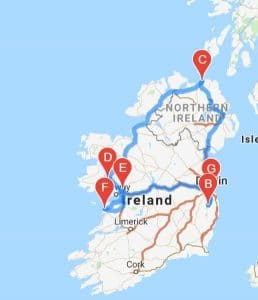
Ultimately we rented an accessible vehicle ( from Motability Ireland https://www.motabilityireland.com/ )and drove from Dublin first to the south and around the Wicklow mountains, then up to Northern Ireland. We stayed in Bushmills for several days, seeing the world famous “Giants Causeway”, touring the back roads and coastal highways of Antrim and even, accidentally, discovering we were at “Game of Thrones” sites. From there we drove past Derry (or Londonderry) to Cork, where we stayed at Ashford Castle. We drove south through Connemara to Galway and then across the Burren to Doolin near the famed Cliffs of Moher. And after a week of driving, we returned to Dublin to fly home.
Dublin and The Wicklow Mountains
When we arrived in Dublin it took a while to find our hotel even though we thought that we had good directions. We learned quickly that signs can be small, up too high or down too low, often non-existent and street names can change often and unpredictably. Our take-away was to vow to never again drive in Dublin if possible! After many wrong turns we arrived at the Clayton Hotel on Burlington Rd.(https://www.claytonhotelburlingtonroad.com/ ). The staff was friendly and helpful,the decor was attractive, but the room we had was not really safely accessible. There was a significant incline between the bed and the bathroom door that was hard to negotiate even in daylight hours! But we were able to make it work for our short stay. In the morning we grabbed our maps and headed out to the Wicklow mountains south of Dublin to do some exploring. Even though it was a cloudy, somewhat misty day, we were able to tour the beautiful Mount Usher Gardens (http://www.mountushergardens.ie/ ) which were almost completely wheelchair accessible. After that we drove to the chapel of St Kevin at Glendalough ( https://visitwicklow.ie/item/st-kevins-kitchen-glendalough/# ), primarily because this wife didn’t believe that there could be a saint with her husband’s name! It was a beautiful, peaceful setting with some accessible pathways and an accessible restroom at a visitor center. The rest of the day was spent driving through the amazing hills and valleys of Wicklow. For long stretches we saw no other cars or people – only hillsides covered with heather or sheep! If you love nature, this is well worth the time. But know that for much of the drive there will be no services, even for the able-bodied.
Northern Ireland
This is a part of the island that tourists had avoided for many years because of the conflicts, known as “The Troubles”. The Good Friday Agreement of 1998 brought the peace that eventually helped tourism return. But even now residents speak of how grateful they are to have visitors discovering the region. We stayed for several days in Bushmills at a lovely hotel named the Smugglers Inn ( https://www.smugglersinnireland.com/ ). Although most guest rooms are on upper floors, they have created a 1st floor accessible room that had no view, but was large and comfortable. The staff was friendly and helpful in ensuring that our special needs were met. During our stay, we were able to visit the Giant’s Causeway, Carrick-A-Rede, Glens of Antrim , Ballycastle, and “The Dark Hedges!”
One of the first stops we made in Northern Ireland was to Carrick-A-Rede. ((https://www.nationaltrust.org.uk/carrick-a-rede ) It was here that our car developed a disability. When it wouldn’t start, a gentleman came by and asked about the problem we appeared to be having “under the bonnet.” After a brief discussion he asked “You do know that this is a diesel?” Gulp! No we didn’t. And our last fill-up hadn’t been! Fortunately some of our worst “adventures” can create our best memories. The amazing staff there called out a “Wrong Fuel Rescue” truck, brought me a manual wheelchair to use (powerchair ramp wouldn’t work without power) and gave us free coffee and baked goods in their coffee shop while we waited. After the fuel was drained and replaced, the car was fine. This was a (somewhat expensive) lesson that brought us some colorful and really nice memories! And even though the main path and rope-bridge at Carrick-A-Rede are not accessible, the views from here were still worth the visit.
I have wanted to see Giant’s Causeway (https://www.nationaltrust.org.uk/giants-causeway) for years since first learning about it on a travel video. We didn’t expect it to be as accessible as it was. There is beautiful visitor center at the top of the ridge, accessible buses going back and forth to the base and several accessible paths around the area. This is a marvel of nature I was grateful to be able to visit.
During our stay at Smugglers Inn, we also took time to drive around this stunningly beautiful area. We drove to the town of Ballycastle to buy scones, drove through several glens and along one-lane dirt “roads”. On one path, we were met head-on by a large flock of sheep being guided by a shepherd on a Quad to a different pasture. No one could turn back, so they just came forward and for a few minutes our car was completely surrounded by a sea of livestock!
The Drive To Cong & Ashford Castle
As we left Bushmills, we continued along the Causeway Coastal Route to Derry / Londonderry and then went south toward our destination in Cong. We spent the day seeing striking coastal views, quiet towns, castles in various states of repair, and quintessentially Irish countryside views.
After our long drive we arrived at the gates of Ashford Castle. We allowed ourselves this once-in-a-lifetime treat of spending the night in a real castle. It was elegant, beautiful and “kind of” accessible. Ramps in the main areas were jury-rigged in ways that don’t really meet standards of safety, but our room was designed to modern guidelines. We spent the day exploring the castle and it’s well- landscaped grounds, bordered by Lake Corrib and natural forest lands. And our dinner was a “feast” in the main dining hall, served by abundant staff, ready to address our every need.
Through Connemara to Galway
We left the elegance of Ashford to continue exploring “natural” Ireland. We drove along Connemarra National Park ( https://www.connemaranationalpark.ie/ ) which covers a broad area of County Galway and includes the roads surrounding part of the famous Twelve Bens or Beanna Beola range. We went on to the picturesque town of Clifden and up a hillside to find the John D’Arcy Monument. No access path here, so I waited in the car while my husband tried to climb through a muddy, cow dung covered path. This was a day when my disability gave me a well-deserved pass on a questionable activity. For lunch we stopped at a small cafe along the shore. It was not at all accessible, so, again, I waited in the car. Gas stations provided needed bathroom breaks on days like this. Most were reasonably accessible.
That night we stayed in Galway at The Connacht Hotel. The accessibility of our room was acceptable although the general decor made it feel like a college dormitory.
Through the Burren to Doolin and The Cliffs of Moher
This day was a vision of “The Princess Bride”, key sections of which was filmed in County Clare. Ireland. We drove through the harsh, rocky, limestone plateau named “The Burren” ( https://www.burrennationalpark.ie/ ) , stopping at Poulnabrone ( https://www.burrengeopark.ie/discover-and-experience/geosites-discovery-points/poulnabrone/ ), on our way to the Cliffs of Moher (https://www.cliffsofmoher.ie/ ) and the delightful town of Doolin (https://doolin.ie/ ).
The Burren has good roads through it although there are no services, so it is important to plan for that. One interesting site out on the Burren is the Poulnabrone portal tomb. This is not really wheelchair accessible and there is no visitor center, but it is generally visible from the car parking area and it’s archaeological history is interesting to learn about.
The Cliffs of Moher are reported to be Ireland’s “favorite” or “top” tourist attraction. Regardless of how it is defined or measured, these cliffs are magnificent and not to be missed. And they served as “The Cliffs of Insanity” in Princess Bride! Fortunately most of the paths at the top of the Cliffs of Moher and all of the other facilities (gift shop, rest rooms, etc.) are wheelchair accessible. We were so grateful to find that access for all was considered in structuring tourist access to this amazing location.
From the Cliffs of Moher we headed to the town of Doolin and checked in to the Hotel Doolin. It looked new and clean and the accessible room was very nice. Interestingly there is a back section to the hotel where a local music festival was taking place. It was a pleasant touch to a nice hotel in a charming little town. Because the town had incomplete sidewalks, having food and entertainment connected to the hotel was particularly beneficial to a wheelchair user!
Heading Home
From Doolin we drove back to Dublin, where we had yet another series of unfortunate problems finding our hotel. This time we were in the Holiday Inn Express Dublin City Centre – Our room was excellent, perfectly designed for wheelchair access. Unfortunately the property itself was not all that easy. Parking is off-site and a block away, There are stairs to reach the elevators so wheelchair users have to first use a mini-elevator to reach the elevator base level. And the hotel has no restaurant, only snacky bar food. If we find ourselves back in Dublin, we will definitely need to try some fresh thinking.
We saw, experienced and learned much on our road trip through Ireland. Here’s some of what we ultimately found in touring Ireland as an “accessibility-requiring” family:
o Accessibility was reasonably good everywhere we went, although not always consistent enough for us to know exactly what you could expect.
o Finding and booking hotels and a wheelchair accessible vehicle was a challenge. The number of available rooms and providers was limited.
o All of the hotel rooms we rented were “accessible-enough” for our needs. But, because, it seems that, the guidelines for accessibility may be less specific, especially for older buildings, some locations were “challenging”
o All of the tourist destinations we visited were quite accessible considering the topography and the age of buildings.
o The restaurants were visited were all accessible, but there were some that we had to rule out because, by calling ahead we learned that they were not.
o BATHROOMS: Of course, this is probably the single biggest issue folks with mobility disabilities face. In our travels we were able to find accessible bathrooms almost everywhere. I found that the actual standard configuration for an accessible toilet is better in Europe than in the US… They feature double arms that fold down rather than the single wall-mounted bar we typically have here. We did see in some situations though that the actual pathways to the bathroom were not sufficiently accessible.
In the end, our road trip through Ireland was fabulous and reasonably accessible. We can’t wait to go back!






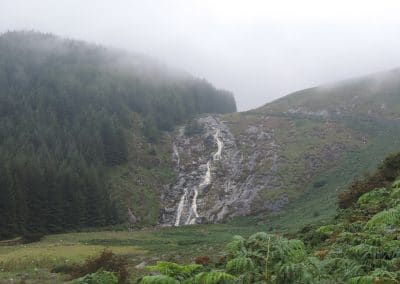
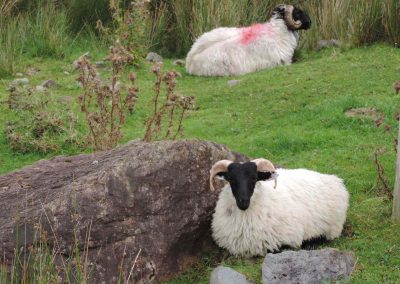
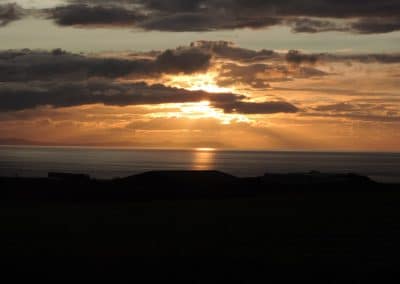
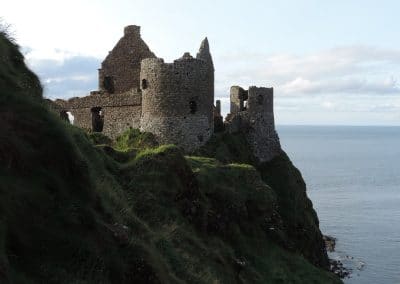


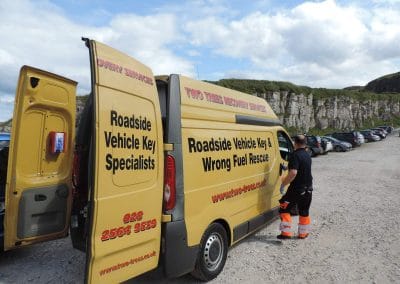
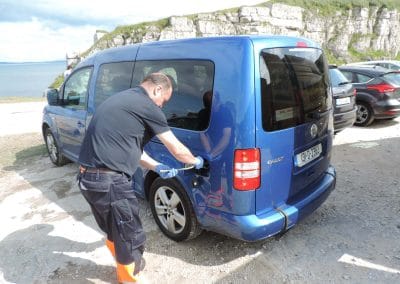
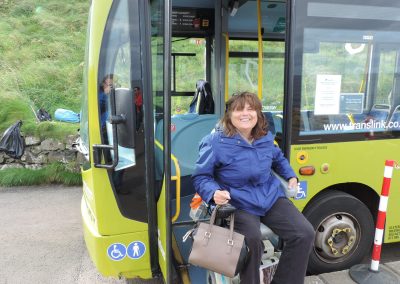
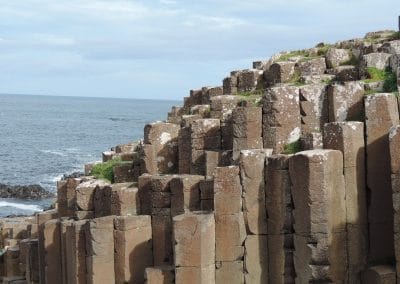


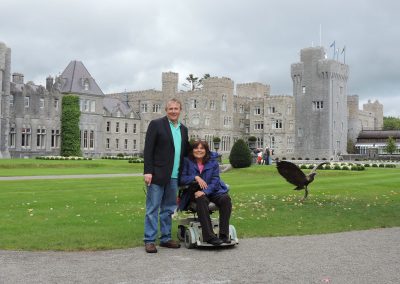
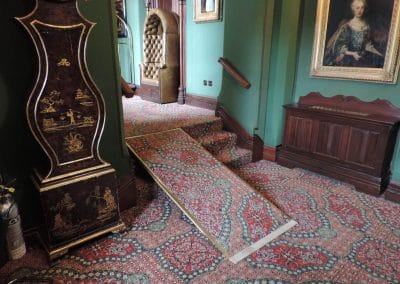
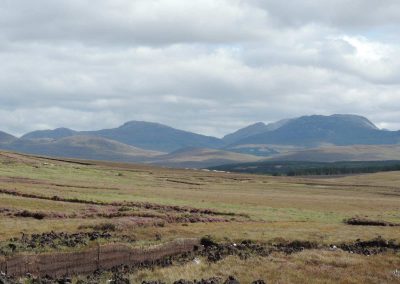
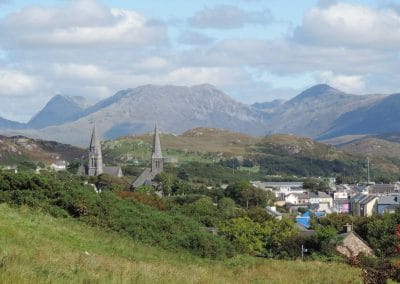
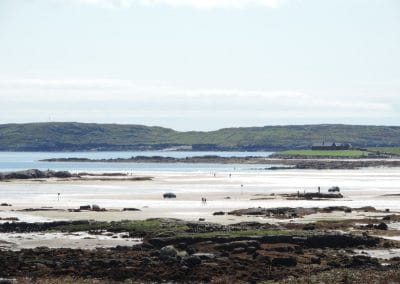

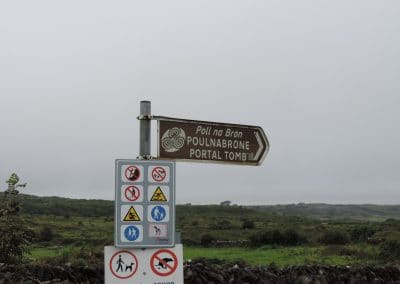

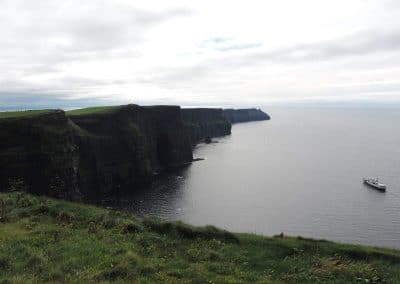

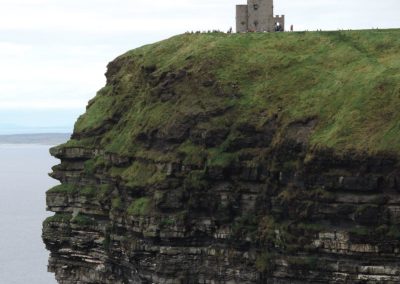
 This website is designed to give you practical tips, advice and links that will support your journey to seek out the solutions that work best for you.
This website is designed to give you practical tips, advice and links that will support your journey to seek out the solutions that work best for you.